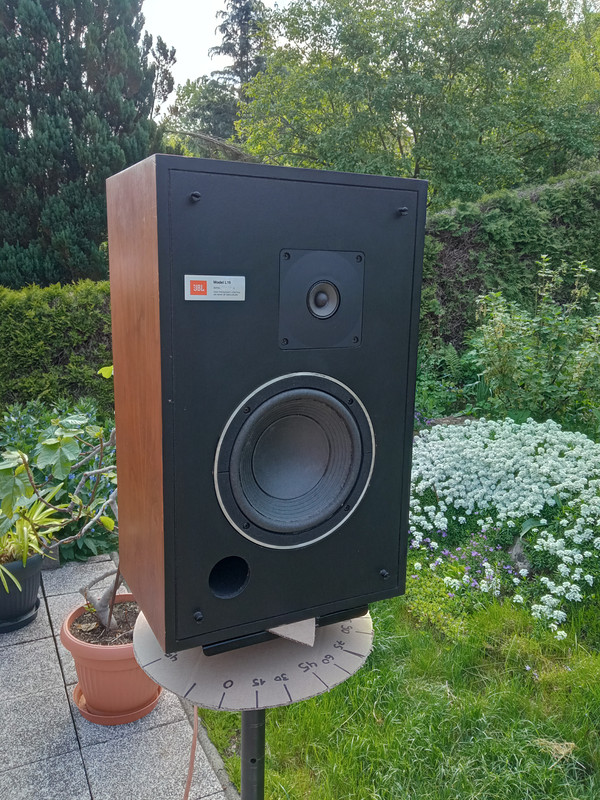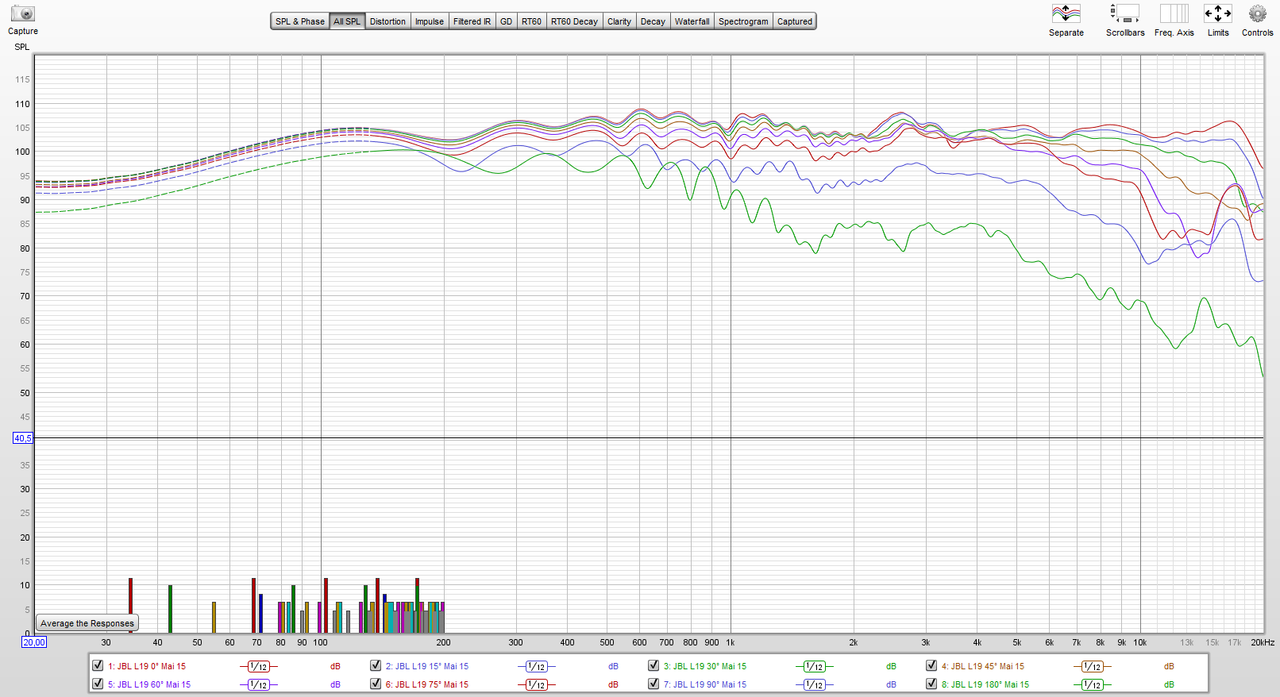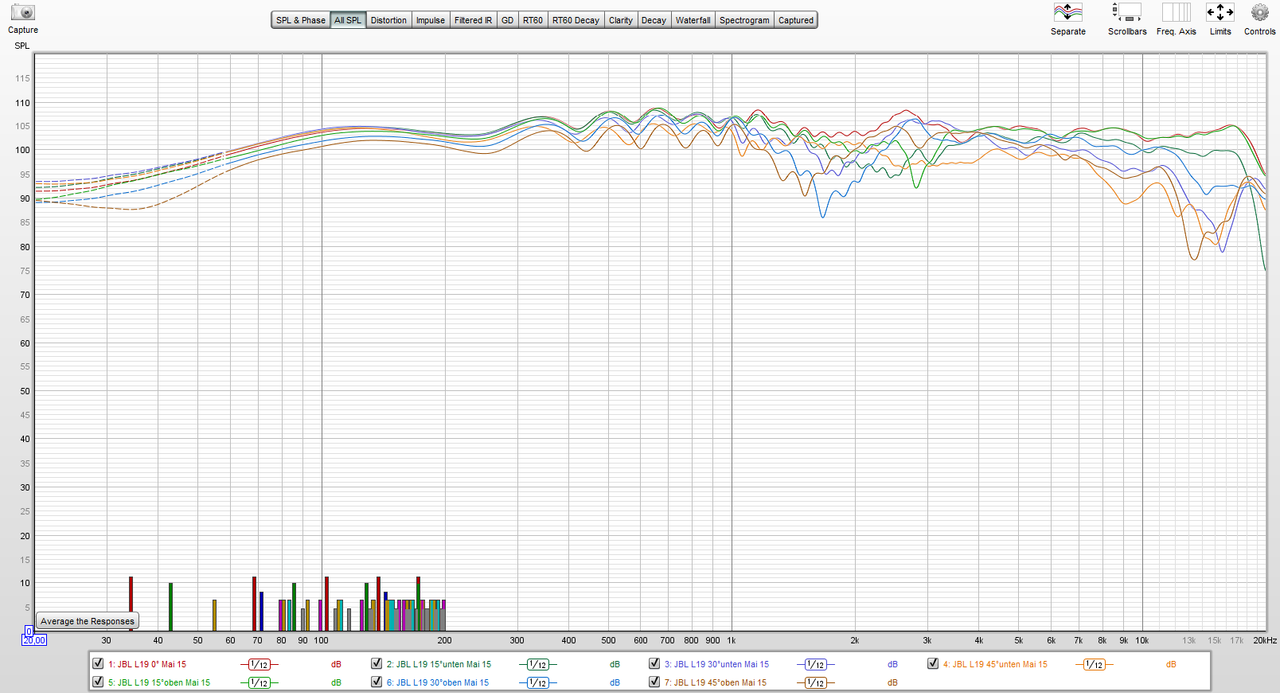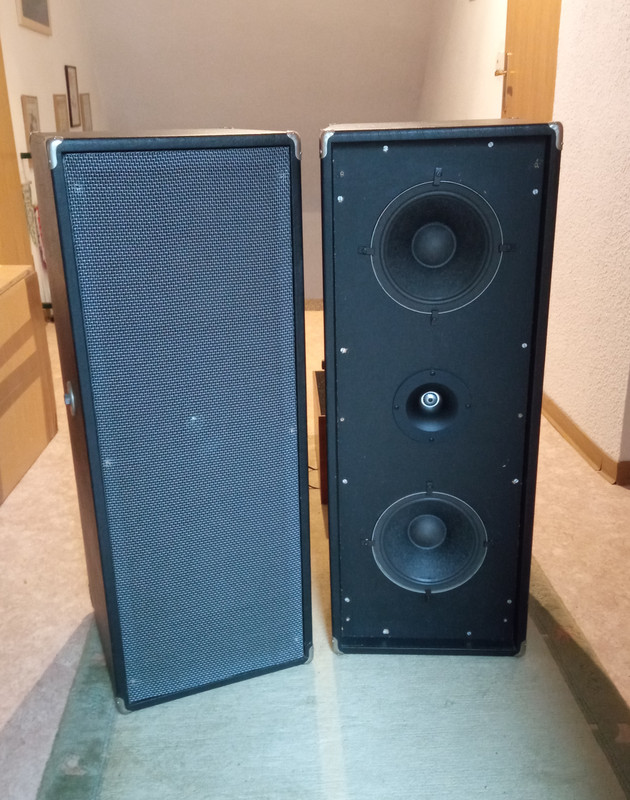laserluxxer
Member
- Joined
- Jun 18, 2023
- Messages
- 12
- Likes
- 26
Cool!
I'll start with JBL L19, so the home variant of the 4301.
I meassured them outside on my terrace with a calibrated behringer ecm8000.

Unfortunately i dont have the original meassurements anymore so i cant scale them to a 50db range.
First Horizontal plots.
0-90° Green is 180° behind the speaker

verticals

So all in all, good horizontals with a lot of off axis energy up to 18k. verticals are as expected but one could find thousands of modern speakers with similar DI.
imo the le25/26 tweeter is quiet impressive. A cone that keeps its directivity to 18khz is something to behold.
in general i think the L19 very impressive for the time and not really outdated in the consumer market.
I'll start with JBL L19, so the home variant of the 4301.
I meassured them outside on my terrace with a calibrated behringer ecm8000.

Unfortunately i dont have the original meassurements anymore so i cant scale them to a 50db range.
First Horizontal plots.
0-90° Green is 180° behind the speaker

verticals

So all in all, good horizontals with a lot of off axis energy up to 18k. verticals are as expected but one could find thousands of modern speakers with similar DI.
imo the le25/26 tweeter is quiet impressive. A cone that keeps its directivity to 18khz is something to behold.
in general i think the L19 very impressive for the time and not really outdated in the consumer market.




